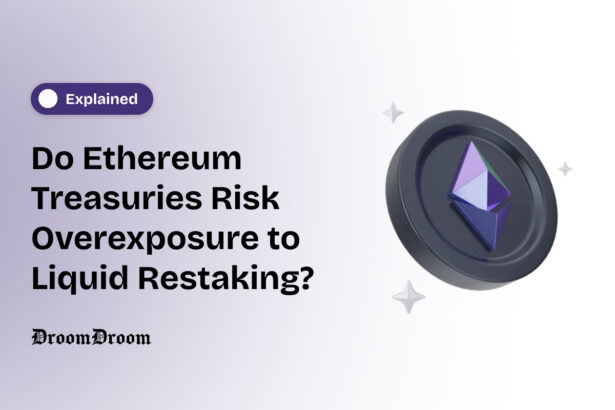Liquid Restaking has become a second source of passive income for Ethereum investors. They offer additional rewards in addition to your staked ETH. However, at times, they could risk the entire portfolio of their investors, too.
In this article, we will try to understand the risks associated with liquid restaking and why ethereum treasuries risk overexposure to them.
How Does Liquid Restaking Work?
Liquidity Restaking allows you to stake your Liquidity Provider tokens (that you get after staking) for additional rewards. It allows Layer-2s, liquidity pools, and several other platforms to maintain their liquidity as well as security.
Ethereum, being the most important cryptocurrency in DeFi, is a prime candidate for LP staking and, therefore, investors often invest their Ethereum LP tokens (i.e., not the ETH token, but the tokens that you get after staking Ethereum in a pool like stETH).
Popular platforms that offer re-staking are Eigenlayer, Lido, Frax Finance, etc. Compared to the number of ordinary staking platforms, only a few platforms offer liquidity restaking.
However, sometimes these liquid re-staking platforms might not be adequately liquid, could be less secure, or even be a straightforward scam.
Risks Associated With Liquid Restaking
Liquid Restaking provides a host of benefits to the user (higher rewards) as well as to the Ethereum ecosystem (better security). However, at times, it becomes risky for corporate treasuries that have bought Ethereum with borrowed capital.
#Note: Borrowed capital remains at the risk of forced foreclosure in case the lender has mentioned loan recall in the debt agreement.
Exit Queues
Liquid Restaking might create an asset-liability mismatch if the re-staking protocol has an exit queue. An exit queue mandates a waiting period to prevent a bank run and run out of liquidity. However, at times when the treasury needs to sell ETH or to lend it elsewhere, the exit queue might result in a lost opportunity. It could also result in a payment default, as most treasuries take debt to buy digital assets for their balance sheets.
Platform Exploit
Liquid Restaking platforms could suffer an exploit and risk all the LP tokens of the liquidity provider. At times when the platform is not large enough, it could be a nightmare to get ETH on loan to repay liquidity providers.
A similar situation occurred in the case of Bybit, which suffered a massive $1.4 billion Ethereum hack. However, Bybit was saved by loans from other entities, which might not be easy for liquidity re-staking protocols.
Liquidity Risk
During bearish market phases, the protocol may become illiquid. This situation could be compounded by macroeconomic factors, such as US Fed rate hikes (similar to those that occurred in 2022-24) or the lack of rate cuts (2024-25).
In situations where the protocol itself becomes illiquid, the ETH or liquidity tokens invested by a treasury may prove difficult to withdraw.
Why Ethereum Treasuries Risk Overexposure?
Ethereum Treasuries face constant pressure to outperform ETFs because they are actively managed funds themselves. If an end user receives the same return in both, they would prefer ETFs (as opposed to Treasury shares), due to lower fees and costs involved.
Furthermore, LP tokens typically sit idle in most cases, making restaking even more attractive.
Therefore, any DAT like Ethereum treasuries are more likely to invest in liquidity restaking, which then opens a host of risks to it.
Take a closer look at all the Ethereum Treasuries. Do you think any of them might be overexposed?
How Much Exposure is Overexposure?
There is no defined limit. Even a 100% exposure could be safe if the platform is a highly liquid and secure one like Lido or Frax.
The lesser the liquidity in the platform, the higher could be the risk associated with it. The same is true for security.
Should Proof of Reserves be a standard for all DeFi Platforms?




















